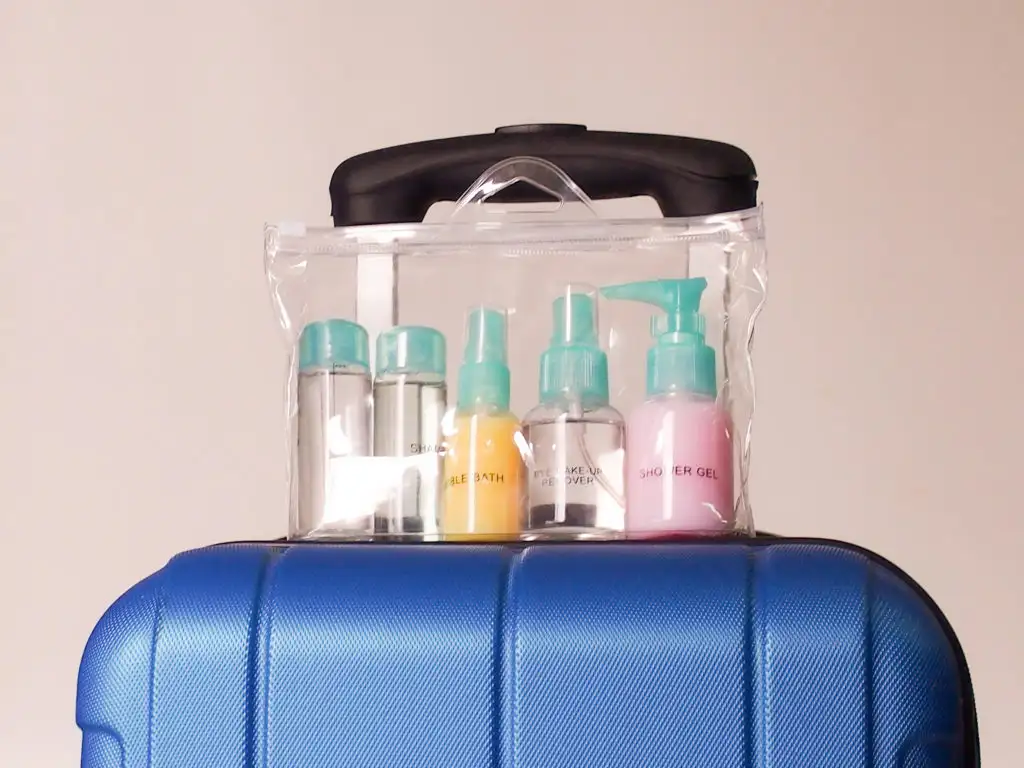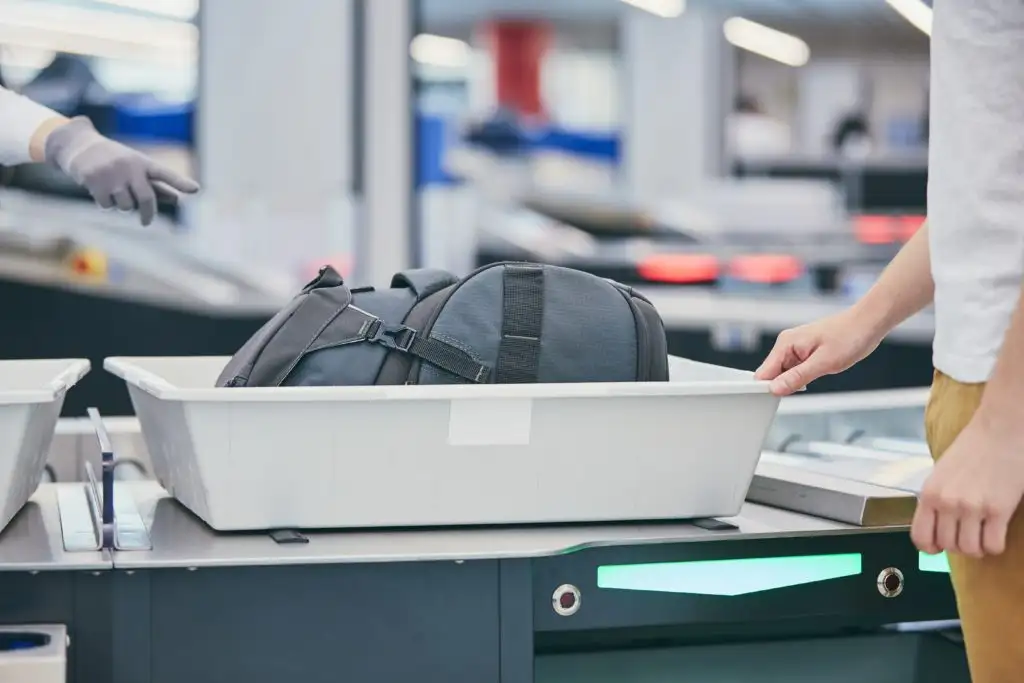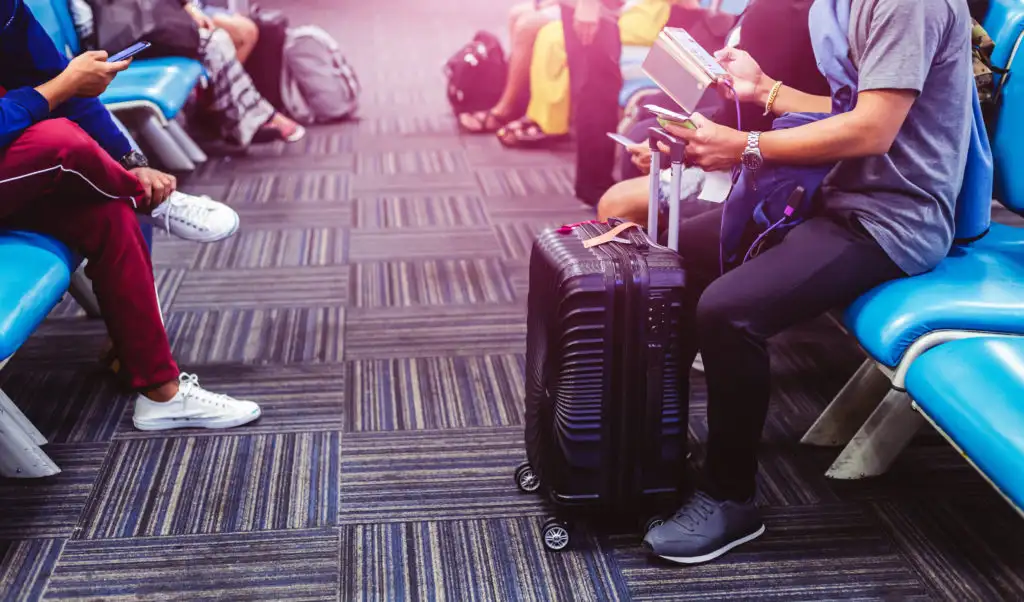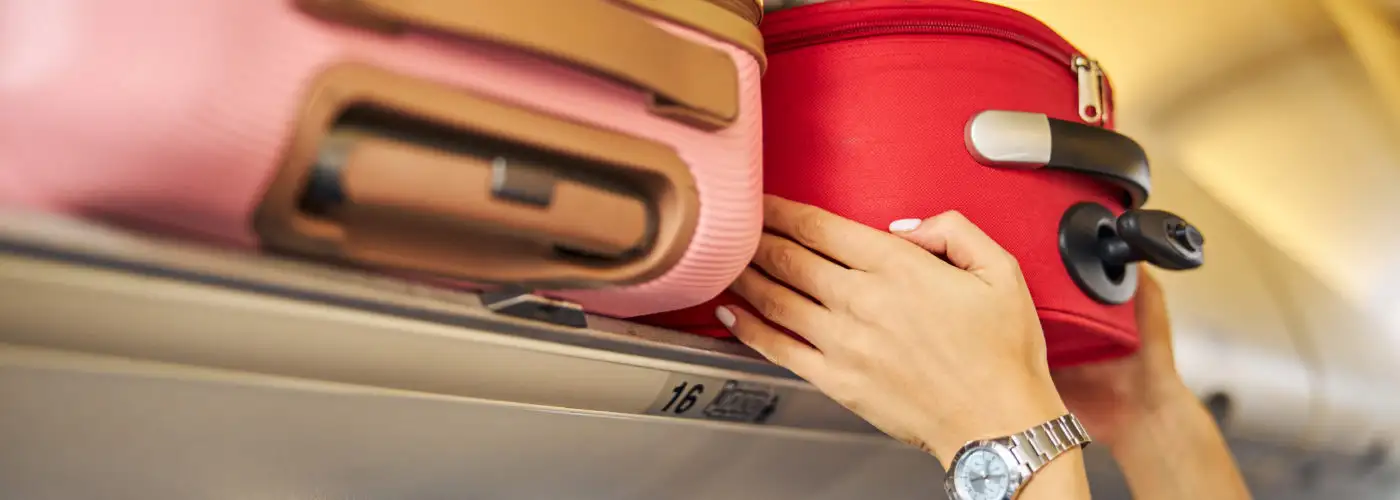There’s an art to packing a carry-on bag. Wise travelers must balance the requirements of airlines and airport security, make sure important items are easily accessible, and remember all the little things that will keep them comfortable in flight. We’ve gathered seven common carry-on bag mistakes you can avoid to set yourself up for airport success. Steer clear of these, and you’ll save money, have a better flight, and avoid running afoul of airport security.
Don’t Bring Liquids or Gels Larger Than 3.4 Ounces (100 Milliliters)

Let’s start with the basics of how to pack a carry-on: If you’re traveling with a full-size bottle of shampoo or sunscreen, it must go in your checked bag, not your carry-on. The world’s airports restrict liquid/gel items in your hand luggage to bottles no larger than 3.4 ounces (100 milliliters); they all must fit within a single quart-size (or liter-size) zip-top plastic bag.
This means that if you’re going to pick up a bottle of water or soda for the plane, be sure to buy it and stow it in your carry-on after security, not before. (Don’t be that bleary-eyed traveler who shows up at an early-morning checkpoint with a cup of coffee you just bought, only to have to throw it away.)
Note that there are a few exceptions to this rule, including essential medications and food for infants or children.
Don’t Pack Other Prohibited Items
Each country’s government has slightly different rules about what can and can’t be brought aboard a plane, but as a general rule you should never put any of the following in your carry-on: firearms, explosives, baseball bats or other sporting equipment that could be used as weapons, self-defense sprays (such as mace), and sharp objects such as knives and safety razors.
Scissors are generally okay when packing a carry-on, as long as the blades are shorter than 4 inches (or 6 centimeters in some countries). Nail clippers and disposable razors will also pass muster in most parts of the world. Swiss Army knives, however, are a no-go. Snow globes are not permitted unless they’re small enough to fit inside your quart-size plastic bag with the rest of your liquids and gels.
You can find lists of prohibited items for the following destinations at the links below. If you’re flying to or from a different country, do a Google search for its security rules, or call your airline.
Don’t Bury Your Liquids and Gels Deep in Your Bag

Save time in the security line by making sure your plastic bag of liquids and gels is right at the top of your carry-on or in an easily accessible pocket—that way you’re not digging around for it while the passengers behind you tap their toes in irritation. The same goes for a laptop computer; unless you’re in an expedited travel line (such as TSA PreCheck in the U.S.), you’ll have to take this out at the security checkpoint for screening.
However, due to new technology coming many airports, many passengers are now allowed to leave liquids and electronics in their bag when going through security. Pay attention to instructions from the TSA agent at your particular airport when moving through the line.
Don’t Pack Too Much
You’re aware that checked bags are subject to extra fees if they’re overweight or oversized—but did you know that many airlines weigh carry-on bags as well? Both Qantas and Air New Zealand, for example, have a 15-pound weight limit for carry-on bags (7 kilograms), while Air France allows a more generous 26 pounds (12 kg) as the total weight of your carry-on plus your personal item. Consider buying a small luggage scale to weigh your bag before you leave; that way you can redistribute or discard items in the privacy of your home rather than at the airport counter.
Many other airlines, including the biggest U.S. carriers, do not currently have weight limits for carry-on bags, but they do have size limits—and unfortunately, they’re shrinking. Check your airline’s site for carry-on size restrictions well before your flight to make sure you have appropriate luggage.
Don’t Assume Your Carry-on Won’t Be Gate-Checked

Even if your bag is perfectly within your airline’s weight and size limits, you might still have to check it at the gate if the plane is very full or it’s a smaller aircraft than expected. Just in case this happens to you, make sure everything truly vital—travel documents, pricey gadgets, medicine—is stowed in the personal item you keep with you, not in the carry-on you gate-check.
Also, make sure there’s a luggage tag on your carry-on; gate-checked bags are occasionally mishandled just as regular checked bags are, and you’ll want your contact information on the bag in case your airline sends it astray.
Don’t Forget Your In-Flight Essentials
Especially for longer flights, you’ll want to stock your carry-on bag with must-haves such as earbuds/headphones (some airlines charge for these), antibacterial hand sanitizer (to help you avoid in-flight germs), an eye mask, a travel pillow, and plenty of reading material. For more ideas, see The Essential Carry-on Bag Packing List.
Don’t Forget to Prepay for Your Carry-on

Some low-cost carriers, including Spirit and Frontier, charge fees not only for checked bags but also for carry-ons. You will pay the lowest possible fee for your carry-on if you pay it online in advance rather than when you arrive at the airport. If you know you’ll be bringing a carry-on aboard your flight, pay for it when you book.
Editor’s note: This story was originally published in 2017. It has been updated to reflect the most current information.
You Might Also Like:
• The Ultimate Toiletry Kit Packing List• The One Thing Solo Travelers Should Always Pack
• The 10 Workcation Essentials You NEED to Pack
• Ridiculously Comfortable Travel Clothing and Shoes That Don’t Sacrifice Style
• What to Pack for the Caribbean: 35 Essentials
We hand-pick everything we recommend and select items through testing and reviews. Some products are sent to us free of charge with no incentive to offer a favorable review. We offer our unbiased opinions and do not accept compensation to review products. All items are in stock and prices are accurate at the time of publication. If you buy something through our links, we may earn a commission.
Related
Top Fares From
Today's Top Travel Deals
Brought to you by ShermansTravel
Shop and Save with Country Inns...
Patricia Magaña
 Hotel & Lodging Deals
Hotel & Lodging Deals
$229 -- Chicago: Discounted Rates and...
Francesca Miele
 Hotel & Lodging Deals
$229+
Hotel & Lodging Deals
$229+
$188 -- Honolulu: Save on Oceanview...
Abigail Lamay
 Hotel & Lodging Deals
$188+
Hotel & Lodging Deals
$188+




